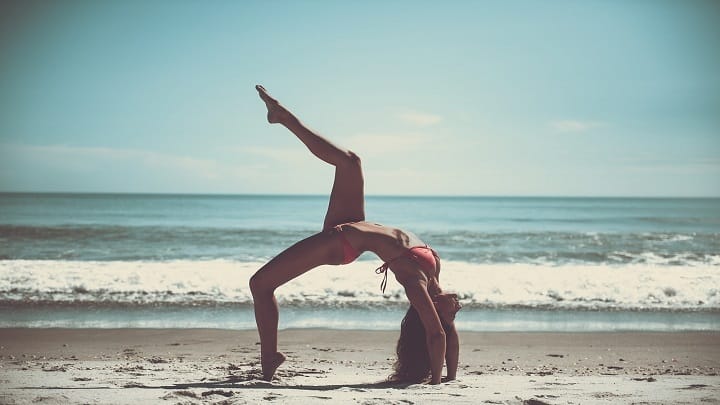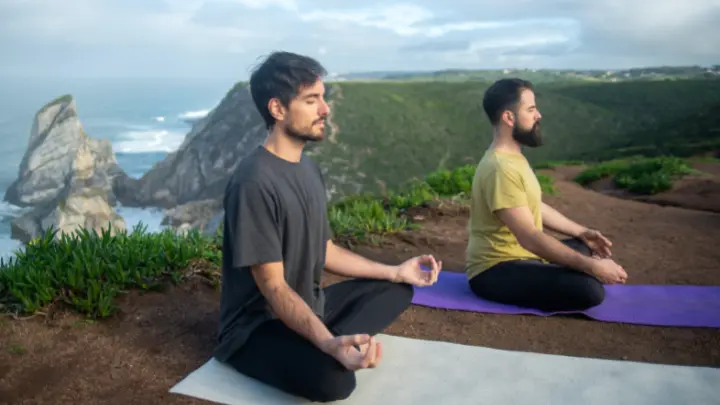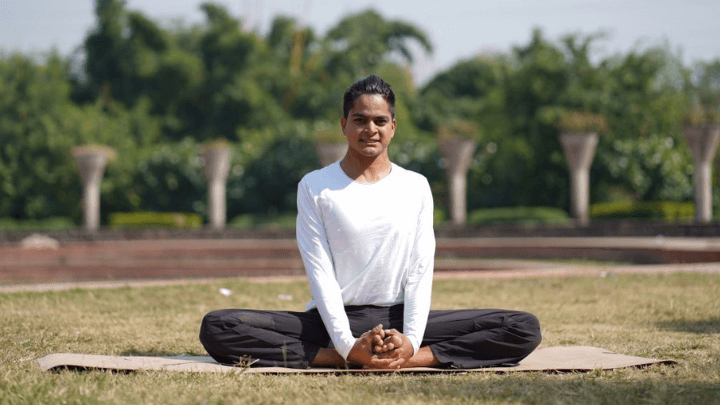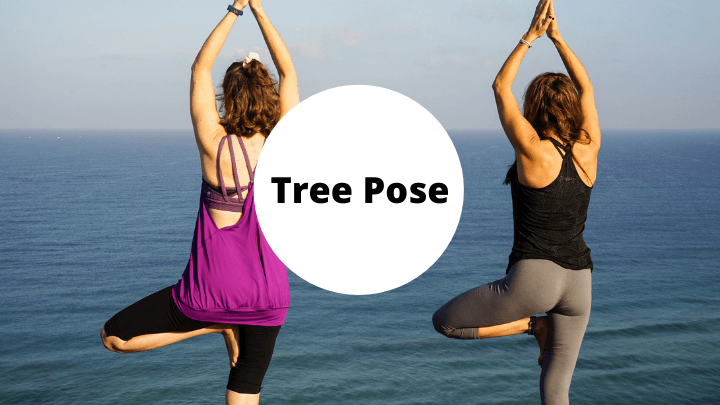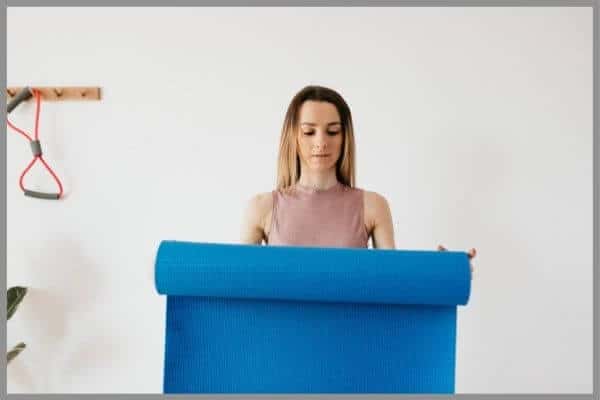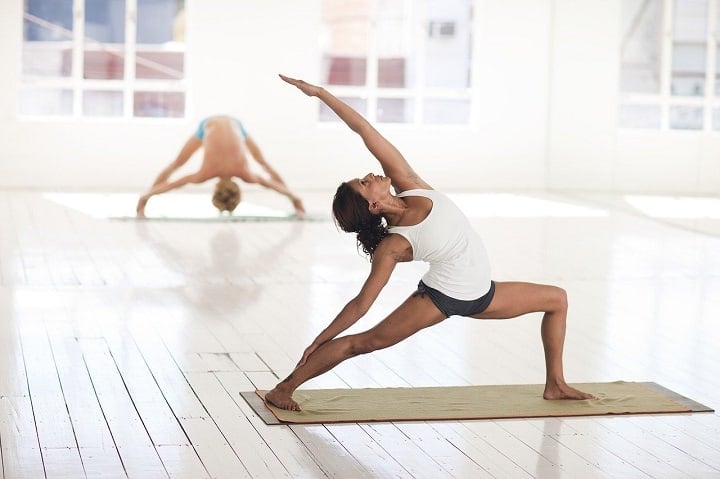
This is a guest post by Andrea Gibbs
As people get older, they are faced with a challenge: staying healthy and active. Yoga is a great way to stay balanced and fit into your golden years. Yoga is also a way of connecting with yourself, with others, and with the world around you. It is never too late to start a yoga practice, even at a later age.
In this article, you will discover everything you need to know about yoga for seniors, including tips to help you begin your yoga practice now as well as helpful resources to help you along your way!
The Benefits Of Yoga For Seniors
Yoga means “union.” It is the union of the body, mind, and spirit. Yoga is a living spiritual tradition that originated in India over 5,000 years ago. It has many different styles and types, but the core of all styles is postures (asanas), breathing techniques (pranayama), and meditation (dhyana). Nowadays, it’s everywhere; you can find classes almost anywhere you go, and the trend is gaining even more momentum as we learn about all the benefits of practicing Yoga.
1. It Reduces Stress
Stress has a big impact on our lives, and if you are living a stressful life, then it’s time to take action. When we are stressed, we let all the tension and emotions interfere with our daily life. Yoga practice allows seniors to calm down by developing awareness of their body and mind, thus minimizing the effects of stress. Without stress in our life, we are more relaxed and happier. Yoga helps us to deal with stress in a positive and healthy way.
2. It Keeps The Mind Sharp
As you age, your mind starts to get sluggish. Yoga allows your mind to stay sharp and awake as you begin to relax more often. This also helps to keep your stress level down, which will help you maintain a healthy lifestyle.
3. It Improves Sleeping Habits
Yoga practice is especially beneficial when it comes to sleeping habits because it prevents most of the chronic disruptions of sleep the body deals with as we get older.
4. It Strengthens The Bones And Joints
The building blocks for a healthy body are the bones and joints. Through yoga practice, your joints become stronger. They will better support you in your daily activities when they are strong. A strong body also helps with balance and flexibility, which is important for seniors as they age.
5. It Reduces Aches And Pains
As people get older, they experience aches and pains that aren’t as easily controlled by medication or physical therapy. Yoga greatly helps reduce those aches and pains by strengthening your body and reducing stress.
6. It Improves Flexibility
Flexibility is an important aspect of our bodies as we age. As we get older, it becomes more difficult to do daily activities and stay active. Yoga practice will help you loosen up so you can keep doing the things you love.
7. It Improves Balance
Yoga helps you develop your center of gravity, which is essential for maintaining balance as we age. The improved balance will allow you to walk safely, get up from a chair, and even just stand from a lying position with greater confidence.
7 Best Yoga Poses For Seniors
Now that you have learned about the benefits of Yoga for seniors, it’s time to learn about the poses that you can begin practicing once at home. While it is ideal to attend a yoga class, it isn’t necessary in order to practice Yoga. Many yoga instructors offer free yoga classes online for all ages. So your loved one can enjoy yoga from the comfort of their own home. For beginners, these are the most important Yoga poses for seniors to help them get started:
1. Tree Pose (Vrikshasana)
This pose is great for leg and abdominal strength. It is excellent for older adults to perform for balance and concentration. And this is one of the ideal Yoga poses for your elderly loved one to try.
Here is how to do this pose:
Ask your senior loved one to stand tall and tell her to place one foot on the opposite inner thigh, either above or below your knee. Then open the leg to the side, bring the hands to prayer, and stay for five to eight breaths.
2. Mountain Pose (Tadasana)
This yoga pose for seniors helps with balance and grounding through the feet. It also gives seniors a great sense of well-being and calm.
Here is how to do this pose:
Keep big toes touching and your heels together as you stand tall. Draw the abdominals in and up, and relax the shoulders down and back. Breathe five to eight breaths while engaging the leg muscles. It’s an excellent pose for older adults as their postures begin to slouch, and also great for keeping the feet healthy and strong.
3. Bird Dog (Parsva Balasana)
The health of the spine is incredibly important as we get older. Bird Dog (Parsva Balasana) is excellent for strengthening the transverse abdominals and the back body and keeping your loved one’s brain young and the mind concentrating.
Here is how to do this pose:
You can start this pose by kneeling and stretching one arm forward and the opposite leg back. Imagine you have a teacup on the back and draw the belly button towards your spine. Stay for a breath, then switch sides. Have them repeat five times. This pose is also great for keeping your loved ones brain young and their mind concentrating.
4. Downward Facing Dog (Adho Mukha Svanasana)
Like any other yoga poses included here, Downward Facing Dog is beneficial for seniors. This pose strengthens the arms and shoulders, tones the core and waist, bring blood flow to the brain, stretches your loved ones’ spine, and strengthens the back.
Here is how to do this pose:
In order to do this pose, start on your hands and knees. Tuck the toes under and lift your hips up and back until you form a triangle. Use your core strength to bring your weight back as much as possible. Stay in the pose for 5 to 8 breaths, lower down, and repeat 2 more times.
5. Cobbler’s Pose (Baddha Konasana)
Stretching the hips and inner thighs in Cobbler’s Pose can start to counteract the effects of spending a long period sitting in a chair or at a desk. It will also help prepare your loved one for other meditative seated poses, which require great flexibility in the hips and groin.
Here is how to do this pose:
Bend the knees and bring the soles of your feet together as you let your knees fall out to either side. Draw the feet in as close to your body as is comfortable. Back off if you sense any pain in the knees. Press the outer edges of your feet together strongly. The feet may start to open like a book. You may encourage this with your hands or hold onto the big toes in a yogi toe lock. Sit tall with a long spine while keeping the shoulder blades on the back and the shoulders moving away from your ears.
6. Sphinx (Salamba Bhujangasana)
Sphinx is a gentle backbend suitable for most senior beginners. It lengthens the abdominal muscles, firms the buttocks, and strengthens the spine. It also stretches and opens the chest, lungs, shoulders, and abdomen. It invigorates a person’s body, soothes the nervous system, and is therapeutic for fatigue.
Here is how to do this pose:
Lie down on your stomach and position the forearms on the mat, elbows under the shoulders. Press firmly into the arms and draw the shoulder blades together and down your back. Lift the abdominals in and up and stay for 5 to 8 breaths.
7. Corpse Pose (Savasana)
Corpse Pose promotes a deep, meditative state of rest, which may help repair cells and tissues and release stress. Additionally, it gives time for the yoga practice to sink in at a deeper level.
Here is how to do this pose:
Separate the legs. Let go of holding the legs straight so your feet can fall open to each side. Bring the arms alongside your body but slightly separated from your torso. Have your palms face upwards but don’t allow to keep them open. Let your fingers curl in. When you have set up your limbs, let go of any effort to hold them in position. Relax the whole body, also your face. Let your body feel heavy. Let breathing occur naturally.
If you discover that your thoughts are drifting, gently bring your attention to your breath but just notice it, not deepen it. Stay for at least five minutes, but ten is even better.
How To Prepare For Yoga?
Yoga provides seniors with some of the best strength and flexibility exercises available. However, as with any physical regimen, it’s important to get ready before you start. Here are tips to help you prepare:
1. Consider Your Physical Condition
Before doing yoga poses, it is important to consider your physical condition. There are things you should consider before starting yoga poses. Firstly, you should ensure that you have no injuries or illness that prevents you from doing the postures and exercises in Yoga. Secondly, before practicing Yoga, make sure that your doctor has given you the green light.
2. Gather Needed Supplies
While some yoga classes can be quite expensive, there are other ways to get into Yoga. If you do not have a membership or fancy practicing in a center, you can get equipment yourself. A few things to consider are:
- Yoga Mat: A comfortable yoga mat is the most important thing you need. Some yoga mats are thick but still good for practicing on; some have extra padding or a non-slip backing and would be better for people looking to practice for a long time.
- Stretchy Clothing for Yoga: Yoga involves stretching, so you should wear clothing that will not get in the way or restrict your movement. Loose, flowy pants and fitted clothes are good for Yoga.
3. Start Slowly
Even after your 80s, you don’t need to spend years and years building up to a full, intense yoga and meditation practice. Just start slowly. Even if you can only do 5 minutes or so at first, that’s better than nothing. If it hurts, pause—remember that the goal is not to hurt yourself!
4. Seek Out A Qualified Teacher
While it feels comfortable to do yoga in the comfort of your own home, it is advisable to take lessons from a qualified teacher. A qualified teacher will help you understand the correct alignment of the postures and give you a slow, steady progression to get started. The instructor can also give you personalized recommendations on how to do your yoga poses and help with questions or concerns you might have.
Conclusion
Yoga provides seniors with a safe and effective way to maintain their health, as well as to gain new physical abilities that are normally lost with age. Yoga is an excellent way to incorporate fitness into your daily routine while also achieving a state of peace and meditation.
Author of this guest post:
Andrea Gibbs is the Content Manager at SpringHive Web Agency, a company that offers web design services, maintenance, and internet marketing. She specializes in content marketing, social media, and SEO. She also serves as a blog contributor at Serenity Senior Care. She’s an avid personal development enthusiast and an expert in the field of health and fitness. When she’s not writing she can be found running hills or hiking trails, rooting for her favorite team (the Pittsburgh Steelers), or watching a good Netflix series.

